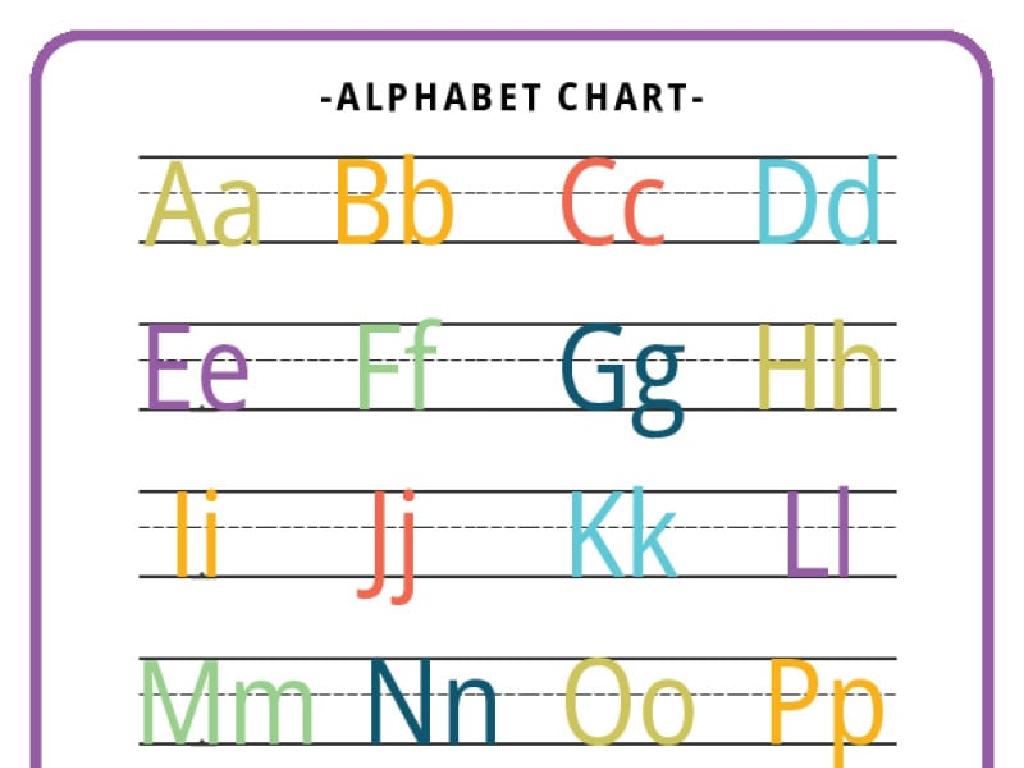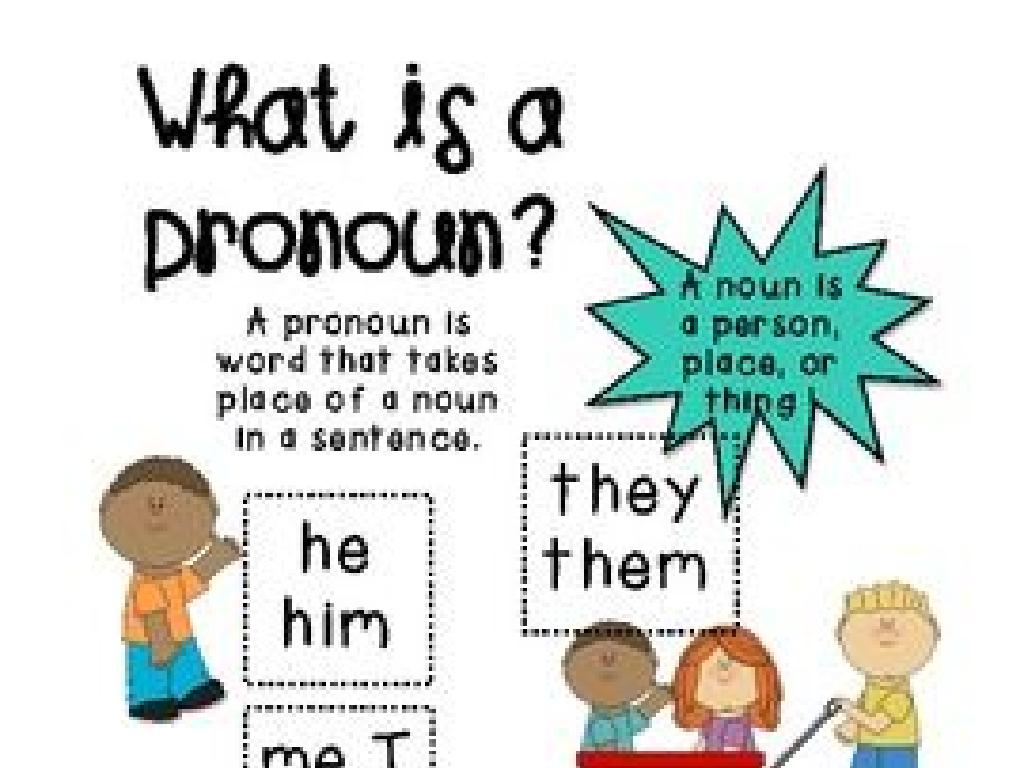Identify Appeals To Ethos, Pathos, And Logos In Advertisements
Subject: Language arts
Grade: Seventh grade
Topic: Persuasive And Opinion Writing
Please LOG IN to download the presentation. Access is available to registered users only.
View More Content
Introduction to Persuasion in Advertising
– Understanding persuasion’s role
– Persuasion is everywhere, shaping decisions and opinions.
– Ethos, Pathos, and Logos defined
– Ethos: credibility, Pathos: emotions, Logos: logic.
– Advertisements’ impact on choices
– Ads often influence what we think we need or want.
– Analyzing ad persuasion techniques
– We’ll learn to spot these techniques in real ads.
|
This slide introduces students to the concept of persuasion, particularly in the context of advertising. Persuasion is a powerful tool used to influence thoughts and actions. Ethos appeals to ethics and credibility, pathos to emotions, and logos to logic and reason. Understanding these concepts will help students critically analyze how advertisements are crafted to influence consumer choices. Encourage students to think of ads they’ve seen recently and what made those ads memorable or convincing. This will set the stage for deeper analysis and discussion in subsequent lessons.
Ethos: The Appeal to Credibility
– Define Ethos in persuasion
– Ethos is convincing the audience of the persuader’s credibility.
– Ethos use in advertising
– Advertisers use ethos by featuring experts or celebrities to endorse products.
– Examples of Ethos appeals
– Celebrity endorsements, expert recommendations, or a company’s reputation for quality.
|
Ethos is one of Aristotle’s three modes of persuasion, focusing on the credibility or ethical appeal of the speaker or advertiser. In this slide, students will learn how ethos is used to persuade audiences by establishing trust and authority. Examples in advertising include using well-known personalities to endorse products, showcasing a brand’s long-standing reputation, or highlighting endorsements from authoritative figures or institutions. Encourage students to think critically about how these strategies influence their perception of products and the effectiveness of advertisements. Discuss how ethos can be a powerful tool in persuasion when used responsibly but can also be misleading if the credibility is not genuine.
Pathos: Appeal to Emotion in Ads
– Define Pathos
– Pathos appeals to audience’s emotions.
– Recognize emotional triggers
– Words or images that evoke feelings like happiness, anger, or pity.
– Examples of Pathos in ads
– Ads using puppies to evoke warmth or urgent messages to inspire action.
– Analyzing ad effectiveness
|
Pathos is a powerful tool in advertising, aimed at swaying an audience’s emotions to persuade or influence them. When discussing Pathos, highlight how advertisers use emotionally charged language, images, or situations to connect with their audience. Provide examples of advertisements that use Pathos effectively, such as a commercial with cute animals to evoke warmth and happiness or an urgent appeal to viewers’ sense of urgency or fear. Encourage students to think critically about how their emotions are targeted by ads and the impact this has on the ad’s persuasive power. Have students bring in ads they believe use Pathos and analyze them as a class.
Logos: The Logical Appeal in Advertising
– Define Logos in persuasion
– Logos is persuading with logic or reason
– Logos uses facts and statistics
– Advertisers use data to convince you
– Examples of Logos in ads
– See how numbers and facts are used in real ads
– Analyzing Logos in class activity
|
This slide introduces the concept of Logos, one of the three modes of persuasion, which relies on logic and reason. Explain that Logos involves using facts, statistics, and logical arguments to appeal to the audience’s sense of reason. Provide examples from actual advertisements that use charts, graphs, or clear arguments to sell a product or idea. For the class activity, students will analyze advertisements to identify and discuss how Logos is used. Encourage them to think critically about the effectiveness of these logical appeals and whether they would be persuaded by the facts presented.
Identifying Ethos, Pathos, and Logos in Ads
– Tips for spotting Ethos
– Ethos: credibility of speaker or brand. Look for endorsements or expert opinions.
– Tips for spotting Pathos
– Pathos: emotional connection. Look for music, stories, or images that stir feelings.
– Tips for spotting Logos
– Logos: logical arguments. Look for statistics, facts, or direct information.
– Discussing appeal effectiveness
– Why do these appeals persuade us? Think about ads that made you want to buy something.
|
This slide aims to help students identify and understand the three modes of persuasion commonly used in advertisements: ethos, pathos, and logos. Ethos refers to the credibility or ethical appeal, pathos to the emotional connection to the audience, and logos to the logical argument. By analyzing ads, students will learn to spot these persuasive techniques and discuss why they are effective. Encourage students to think critically about how these appeals influence their perceptions and decisions. Provide examples of ads that effectively use these appeals and have students analyze them in groups or pairs, discussing the impact of each technique.
Class Activity: Analyzing Advertisements
– Select an advertisement to analyze
– Find Ethos, Pathos, and Logos
– Ethos: credibility/trust, Pathos: emotions, Logos: logic/reason
– Explain each appeal’s use in the ad
– Why did the ad use these appeals? How effective were they?
– Prepare to discuss your analysis
|
This activity is designed to help students apply their understanding of rhetorical strategies in a practical setting. They will choose an advertisement, which could be a print ad, commercial, or digital ad, and identify the persuasive techniques of ethos, pathos, and logos. Ethos refers to the credibility or ethical appeal, pathos to the emotional connection, and logos to the logical argument. Students should explain how these appeals are used to persuade the audience and consider their effectiveness. After the analysis, students will share their findings with the class, fostering a discussion about persuasive techniques in advertising. Possible variations of the activity could include group work, comparing two different ads, or creating their own ad using these techniques.
Reflecting on Persuasive Techniques in Ads
– Recap: Ethos, Pathos, Logos
– Ethos: credibility, Pathos: emotion, Logos: logic
– Critical thinking in ad analysis
– Analyzing ads requires evaluating the argument’s strength critically.
– Discuss ads’ persuasive impact
– How do these techniques influence our decisions?
– Share personal reflections
– Think about an ad that stuck with you and why.
|
As we conclude, revisit the concepts of ethos, pathos, and logos, ensuring students understand these rhetorical strategies used in advertisements. Emphasize the importance of critical thinking when analyzing ads, not taking them at face value but considering the underlying messages and intentions. Facilitate a class discussion on how these persuasive techniques can impact consumer behavior and decision-making. Encourage students to share their thoughts and any personal reflections on advertisements that have been memorable to them, discussing why those ads were effective or ineffective. This reflection will help solidify their understanding of the material and its relevance to their daily lives.






